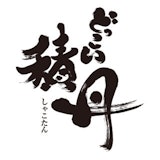Hello COOL JAPAN VIDEOS viewers.
This time, we would like to introduce the "Bikuni Shrine Annual Grand Festival".
The "Bikuni Shrine Grand Festival" is held in Bikuni Shrine for three days on July 4, 5, and 6 every year.
We haven't been able to hold it for Coronavirus pandemic for several years, but it will finally be held this year.
A traditional event that has existed since the Edo period and is the only Bikuni Shrine in Japan.
Praying for a good catch and a good harvest, there is a sea crossing at the port, and a lively escort by mikoshi and floats in the urban area.
The main event, "Tengu Fire Walking," will be held on the night of July 5 and 6 in the Bikuni Shrine precincts.
When the tengu and mikoshi who have been touring the town return to the shrine, they burn the shrine in the precincts to remove the dirt.
The brave young people carrying the mikoshi do not flinch and rush, "Wasse, Wasse."
The sight of the tengu walking majestically in the midst of the sparks and the people carrying the mikoshi is absolutely magnificent.
Please come and visit the Shakotan to feel this festival firsthand.
Show original text

![[Image1]Hello COOL JAPAN VIDEOS viewers.This time, we would like to introduce the](https://img-cooljapan.imgix.net/member_posts/image/0e63b1836c2d3c906b1d4f2f3f587e20e82d2142.jpg?w=330&h=330&fit=min&auto=format&q=70)
![[Image2]Hello COOL JAPAN VIDEOS viewers.This time, we would like to introduce the](https://img-cooljapan.imgix.net/member_posts/image/8487ab937c9fcde0e5b5f18ecf7196c9599abb18.jpg?w=330&h=330&fit=min&auto=format&q=70)
![[Image3]Hello COOL JAPAN VIDEOS viewers.This time, we would like to introduce the](/img/dot.gif)


I'd love to see it in action!
Show original text Hide original text
Show original text Hide original text
Show original text Hide original text